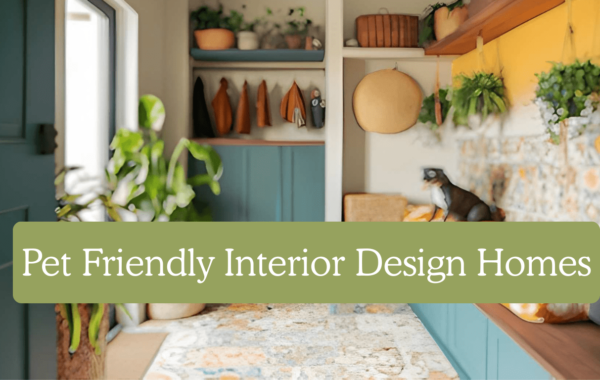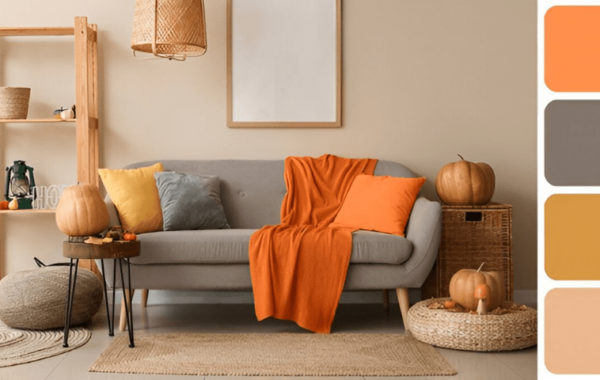
Mix and Match: The Art of Textures in Interior Design
Introduction:
Regarding interior design, we frequently concentrate on color schemes, furniture styles, and decorative elements. However, one often underestimated aspect that can truly transform a space is textures. The art of mixing and matching textures in interior design can elevate the overall aesthetic, adding depth, warmth, and visual interest to any room. This piece will examine the significance of textures and provide simple tips on mastering the art of incorporating them into your home.
Understanding Textures:
Textures refer to the tactile quality of surfaces within a space. In interior design, textures are crucial in creating a sensory experience beyond the visual. They add a layer of richness, making a room feel more inviting and complete. The key is to strike a balance between different textures, ensuring they complement each other and contribute to the overall harmony of the design.
Soft and Cozy Textures:
Soft textures, such as plush rugs, velvet upholstery, and fluffy cushions, give a room a sense of comfort and coziness. These textures are perfect for spaces where relaxation is vital, such as living rooms and bedrooms. Consider incorporating soft throws over furniture or investing in a luxurious rug to create a warm and inviting atmosphere.
Smooth and Sleek Textures:
Smooth textures, like polished wood, glass, or metal, bring a modern and sophisticated feel to a space. These textures are often associated with contemporary design styles. Consider sleek furniture pieces, smooth countertops, or reflective surfaces to give a refined touch to your interior. The contrast between soft and smooth textures can create a visually appealing dynamic.
Rough and Raw Textures:
Raw textures, such as exposed brick, stone, or natural fibers like jute and sisal, add an element of earthiness to a room. These textures work well in creating a rustic or industrial look. Consider incorporating raw textures for walls, exposed beams, or natural fiber furniture to bring a touch of the outdoors inside.
Patterned and Textured Fabrics:
Fabrics with patterns or textures, such as herringbone, chevron, or knitted designs, can add visual interest to a space. These textures are often found in upholstery, curtains, and throw pillows. Combining several textures and patterns into a single color scheme can create a lively and dynamic atmosphere without being overwhelming.
Mixing Textures in Small Spaces:
In smaller spaces, it’s essential to be mindful of the scale and density of textures. Opt for lighter textures and neutral colors to avoid overwhelming the space. Think about reflecting light with mirrors to provide the appearance of a larger area. Additionally, incorporating multifunctional furniture with different textures can maximize style and practicality in compact spaces.
Harmonizing Colors and Textures:
Pay attention to the color palette when mixing textures to ensure a cohesive look. Neutral tones like whites, grays, and earthy colors work well together, allowing the surfaces to take center stage. Try several hues within the same color family to produce depth while maintaining a harmonious balance.
Layering Textures:
Layering textures adds dimension to a room and prevents it from feeling flat. Combine different textures through layering rugs, throws, and cushions. For example, pair a smooth leather sofa with a chunky knit throw or layer a sisal rug over a hardwood floor. This layering technique adds visual interest and a sense of comfort.
Personalizing Spaces with Textures:
Personalize your space by incorporating textures that resonate with your style and preferences. Whether it’s a collection of vintage books, handmade ceramics, or textured artwork, these personal touches add character and warmth to your home. Consider mixing sentimental items with different textures to create a space uniquely yours.
Conclusion:
In the world of interior design, the art of mixing and matching textures is a powerful tool that allows you to create a space that looks visually appealing and feels inviting and comfortable. Understanding the role of soft, smooth, rough, and patterned textures and incorporating them thoughtfully into your design can transform your home into a harmonious and textured haven. Experiment with different combinations, be mindful of scale, and take delight in designing an area that expresses your taste and personality.
It is wiser to hire the best interior designer to get work done. It does not belong to DIY-like projects, as it has many factors to consider. Hence, it is advised to get help from professionals. In that way, Cibi+Simeon Designs will help you out professionally. As we have an excellent team, we are proficient in handling various projects by meeting clients’ needs. Contact us for quality outcomes.
FAQs
Texture adds depth and visual interest to a space. It engages the senses, creating a more dynamic and inviting environment. Mixing textures allows you to create contrast and balance, enhancing the overall aesthetic of a room.
Start with a cohesive color palette as a foundation. Mix textures within this palette, varying the scale of textures (e.g., combining large-scale patterns with smaller, more subtle textures). Maintain balance by distributing textures throughout the space rather than concentrating them in one area.
Combining natural textures like wood and stone with softer textures like velvet or faux fur can create a balanced contrast. Mixing smooth surfaces like glass or metal with rougher textures like woven fabrics or textured wallpapers can also be visually appealing.
Opt for lighter and simpler textures in smaller spaces to avoid overwhelming the area. Consider using textures in smaller doses, such as through throw pillows, rugs, or accent pieces. Mirrors can also add a reflective texture, creating the illusion of more space.
Follow the “rule of three” when mixing patterns and textures. Choose three different patterns or textures in varying scales. Include a large-scale pattern, a medium-scale one, and a small-scale one. This helps maintain balance and prevents the design from looking too busy.


